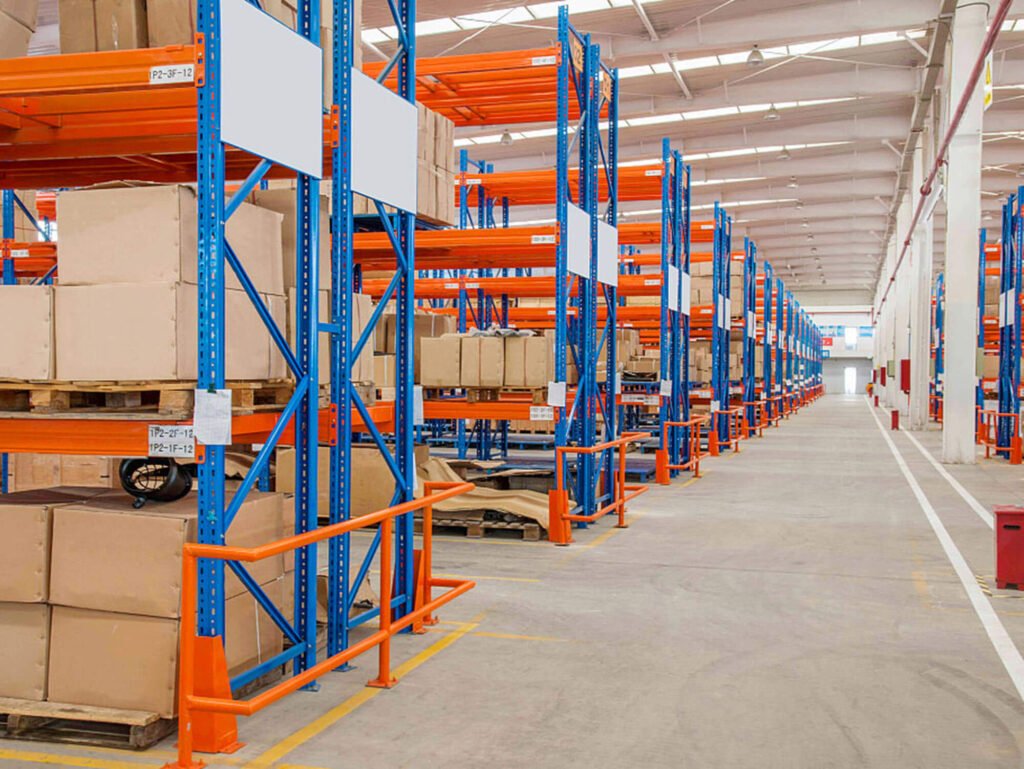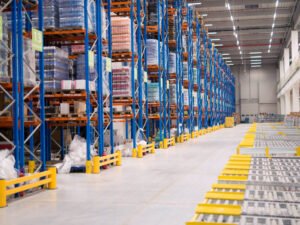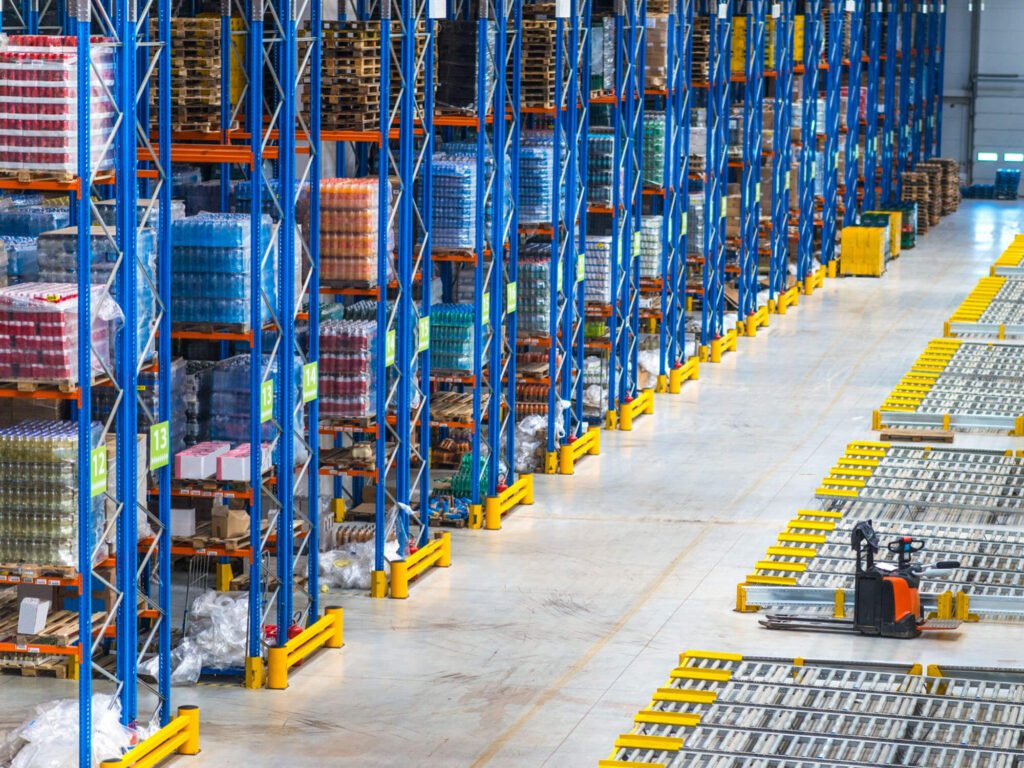Warehouse optimization is the key to unlocking your facility’s full potential. Consider this: a stunning 77% of firms are actively striving to automate their warehouses in order to benefit from data-driven performance gains. Inefficiencies in conventional warehouses also exist, with roughly half of order picking time lost on transit alone.
It’s clear that warehouse optimization is no longer solely about space conservation. Nowadays, it also involves enhancing efficiency, reducing expenses, and improving your bottom line.
If you’re in need of some warehouse optimization ideas, then this in-depth guide is for you. The article unpacks everything about the concept and examines its critical role in today’s fast-paced corporate environment. You’ll also look at the practical strategies that can transform your warehouse.
What Exactly Does “Warehouse Optimization” Mean?
Warehouse optimization is the strategic process of improving the efficiency, productivity, and accuracy of your warehouse operations. It incorporates a diverse range of activities, ranging from the optimization of space utilization and the leveraging of technology to the refining of operations and the assurance of precise inventory management.
Think of this activity as a complete tune-up for your warehouse, just like how you take your car in for a service to keep it running smoothly. By fine-tuning every aspect of your operation, you’ll create a well-oiled machine that can get those orders out the door faster, thus boosting your bottom line.
How Can Warehouse Optimization Benefit You?
Warehouse optimization offers many advantages to help augment your organization. Below are some of such notable benefits:
More Precise Order Selection
Have you ever ordered something online only to receive the incorrect item? Isn’t it frustrating? Imagine the mayhem that arises in a warehouse when picking and packaging mistakes occur on a wider scale. Not only does it cost money to correct these errors, but it also undermines consumer confidence.
Warehouse efficiency saves the day with advanced order-picking software and clear labeling solutions. This combination allows your pickers to select the right item every time, thus lowering returns and boosting customer satisfaction.
Better Stock Management
Inventory management appears to be an endless game of hide-and-seek, especially when managing thousands of products. Doing everything manually is like looking for a needle in a haystack. It takes a lot of time and you’ll make mistakes.
Warehouse optimization brings order to the chaos with real-time stock management systems. They keep track of all your product movement, providing you with immediate access to each item’s location, order status, and stock level.
Faster Order Delivery
Let’s face it, in today’s world, everyone wants their stuff delivered fast! But if your warehouse is slow and disorganized, it’s like trying to run a marathon in flip-flops – not gonna happen.
Warehouse optimization expedites product delivery by enhancing the shipping and reception processes. This minimizes the time spent on documentation, thus increasing the amount of time it takes to prepare and dispatch the orders.
Lowering Operating Expenses
Financially, running a warehouse is far from easy. You need to pay your employees, maintain those machinery running, and deal with the odd setback, which may cost you time and money. All of these factors might have a significant impact on your profitability if not managed properly.
Warehouse optimization assists in fine-tuning operations and decreasing the costs of doing business. By optimizing space utilization, minimizing errors, and expediting processes, it’s possible to reduce expenses such as storage fees and labor costs.
Quicker Return Processing
Returns are an inevitable aspect of existence. But an optimized warehouse can transform this headache into a seamless operation. With streamlined processes and designated areas for returns, you can quickly get those items back in stock and ready to be sold again.
This not only reduces storage expenses but also demonstrates to your customers that you prioritize their satisfaction. An effortless return process can significantly enhance consumer loyalty and encourage them to return for additional services.
6 Key Aspects Of Warehouse Optimization
Warehouse optimization is a multifaceted process to help enhance many parts of your business. Below are the six main aspects of this activity and how they can elevate your business.
#1: Warehouse Space Optimization
With warehouse vacancy rates at all-time lows and demand for storage space on the increase, maximizing your current footprint is more important than ever. That’s why warehouse space optimization is a critical component of effective warehouse operations.
Companies can enhance their warehouse space via many ways, such as by choosing the appropriate racking methods (pallet racking, cantilever racking, or drive-in racking) and enhancing storage density. Utilizing vertical space with high-rise shelving and mezzanine levels also increases storage capacity without demanding more floor space.
When executed properly, warehouse layout optimization can generate evident benefits, such as increased mobility within the facility, reduced leasing expenses, and substantial energy savings, which can be leveraged to optimize profitability.
Benefits:
- Increasing storage capacity.
- Lowering leasing expenses.
- Improving mobility and workflow.
- Potentially saving energy.
Challenges:
- Demanding careful planning and design.
- Involving upfront investments in new storage systems.
#2: Inventory Optimization
The second aspect of warehouse optimization focuses on striking the correct balance between overstocking and understocking. You must ensure sufficient inventory to meet consumer demand without locking up too much money in unsold things.
Inventory optimization uses data and smart tools to figure out what people want and when they want it, helping you stock just the right amount. This way, you avoid running out of hot items or getting stuck with a bunch of stuff nobody wants.
Yet, this aspect does come with some warehouse optimization problems. Balancing the necessity for appropriate safety stock with the danger of overstocking is a complex undertaking. Not to mention, recognizing and removing outdated items before they become a financial burden requires proactive monitoring and effective disposal techniques.
Benefits:
- Reducing holding costs and improving cash flow.
- Minimizing the risk of stockouts and overstocking.
- Enhancing demand forecasting.
Challenges:
- Balancing safety stock with overstocking concerns.
- Identifying and addressing obsolete inventory.
#3: Warehouse Racking Optimization
Beyond just putting racks in place, warehouse racking optimization involves strategically arranging and using these storage systems to increase productivity. It requires thorough planning in stock placement and rotation to ensure that high-turnover commodities are easily accessible while reducing needless movement and handling.
By placing high-demand items in easy-to-reach spots, your workers can zoom around the warehouse like pros, thus fulfilling orders faster and more precisely.
Yet, warehouse racking optimization presents unique obstacles. Poor organization will lead to bottlenecks, while inappropriate racking systems can cause product damage or spoilage, possibly affecting up to 2% of items transported and a startling 30% of perishable commodities in the food sector.
Benefits:
- Reducing the risk of product damage.
- Improving picking efficiency.
- Shortening travel time for workers.
- Enhancing stock management.
Challenges:
- Potentially creating bottlenecks in the picking process.
- Posing risks of product damage or spoilage.
#4: Labor Optimization
Labor expenses are high in warehousing, although the business has a high turnover rate (63% after the pandemic). Together with the difficulty of recruiting and retaining skilled employees, these challenges are creating a constant drain on resources.
That’s where labor optimization comes in. It’s all about helping your employees work smarter, not harder, while also making sure they’re happy and healthy.
One big part of that is providing regular training and opportunities for growth. Not only does it help your workers improve their skills and knowledge, but it also shows them that you care about their development.
Benefits:
- Increasing productivity and efficiency.
- Lowering labor costs and turnover rates.
- Improving employee morale and job satisfaction.
- Enhancing safety awareness.
Challenges:
- Attracting and retaining qualified workers.
- Managing fluctuations in labor productivity.
#5: Warehouse Operation Optimization
Warehouse operation optimization is the fine-tuning of all internal operations to achieve maximum efficiency while eliminating waste. This includes optimizing procedures, using lean concepts, and always looking for methods to increase production and save expenses.
Optimizing picker routes is an important part of warehouse picking optimization. It’s possible to reduce worker travel time and increase order picking efficiency by strategically locating high-demand commodities in conveniently accessible places and employing efficient picking tactics such as batch picking or zone picking.
Another essential consideration is improving the receiving and putaway operations. This includes speeding the unloading and inspection of incoming items, as well as effectively allocating storage areas based on product kind, demand, and other pertinent data.
Benefits:
- Faster order fulfillment and reduced lead times.
- Minimizing operational costs.
- Improving inventory accuracy and visibility.
- Boosting customer satisfaction.
Challenges:
- Adapting to changing demand patterns and inventory levels.
- Requiring continuous monitoring and improvement of processes.
#6: Warehouse Technological Optimization
This final aspect entails using the power of cutting-edge technology to boost operations. This involves deploying Warehouse Management Systems (WMS), robots and automation, and the Internet of Things (Iot), all of which seek to streamline procedures, improve accuracy, and reduce costs.
According to industry research, warehouses that use WMS achieve outstanding inventory accuracy rates of up to 95%, compared to 60% in conventional setups. Likewise, order accuracy rates for WMS users reached an impressive 99%, above the average of 90% for non-WMS users. This clearly demonstrates the potential for technology to change warehouse operations.
By automating repetitive tasks and giving real-time data insights, technology can help you make educated choices, reduce mistakes, and enhance overall efficiency. Technological optimization can also improve picking routes and stock management, as well as automate material handling and shipping processes.
Nevertheless, the initial expenditure required to install and integrate these technologies might be substantial. Plus, dependence on technology can lead to risks such as system breakdowns or downtime that interrupt operations.
Benefits:
- Improving accuracy and reducing errors.
- Increasing efficiency and productivity.
- Real-time data insights for better decision-making.
- Minimizing labor costs.
Challenges:
- High initial investment.
- Potential for system failures or downtime.
10 Actionable Strategies To Optimize Your Warehouse
Now that you understand all the ins and outs of warehouse optimization, it’s high time to roll up your sleeves and start transforming your inventory facility. Let’s look at the following 10 concrete strategies that will help you attain peak efficiency and uncover hidden profitability.
Utilizing A Warehouse Management System (WMS)
A Warehouse Management System (WMS) serves as the command center for your warehouse, managing everything from inventory monitoring to order fulfillment. This robust program gives you real-time access to your stock levels, locations, and even employee productivity.
By automating procedures and centralizing data, a WMS removes guessing and simplifies operations, resulting in more accurate inventory counts, quicker shipment, and considerable cost savings. Consider it your warehouse’s personal assistant, ensuring that everything runs smoothly and efficiently.
Investing In Robotics And Automation
Robotics and automation are transforming warehouse optimization, providing a strong solution to satisfy the growing needs of e-commerce. Technology is revolutionizing warehouses in various ways, including Automated Guided Vehicles (AGVs), robotic picking systems, and sophisticated conveyor systems.
By automating labor-intensive procedures, these inventions improve operational efficiency, reduce mistakes, and increase output. Furthermore, they handle manpower constraints and allow 24-hour operations, increasing efficiency even during off-peak hours.
Augmenting Warehouse Layout Design
Your warehouse’s physical architecture has a direct influence on its operational efficiency. Warehouse layout optimization reduces transit time for employees and equipment, improving the flow of commodities and increasing overall production.
Consider aisle lengths, product positioning, and zoning while building your warehouse layout. Strategically locating high-demand products near the dispatch area and establishing designated zones for certain operations can help simplify processes and eliminate wasted time and effort.
Employing Smart Pallet Racking Systems
Traditional static racking may sometimes result in underused space. Upgrading to dynamic storage solutions, such as mobile racking or gravity flow racking, can greatly improve warehouse efficiency. These systems adapt to your inventory, ensuring that fast-moving goods are readily accessible while slow-moving products do not take up valuable space.
Pallet flow racking, for example, employs inclined rails and rollers to enable pallets to easily travel to the front for pick-up. This not only saves time but also optimizes stock rotation and reduces product handling.
Prioritizing Demand Forecasting
Warehouses can forecast what consumers want and when they want it by analyzing past sales data and monitoring market trends. This allows you to stock up on the correct items at the right time, avoiding the dreaded “out of stock” situations and keeping your customer satisfied.
Accurate demand forecasting is like having a crystal ball for your inventory. It enables you to match your stock levels to real-world demand, ensuring that you don’t waste money on extra inventory or miss out on sales opportunities due to stockouts.
Conducting Frequent Labor Training
Your warehouse employees are the foundation of your business; thus, investing in their training and development is a wise decision for warehouse efficiency. Regular training sessions provide workers with the skills and information they need to execute their jobs effectively and securely, while also encouraging a culture of continual growth.
Training should include not just technical skills but also soft skills such as collaboration and problem solving, enabling your staff to adapt to changing technologies and problems.
Plus, using novel training techniques, such as Augmented Reality (AR), can offer immersive learning experiences, preparing workers for numerous real-world circumstances and improving their abilities.
Implementing Green Practices
As environmental concerns gain traction, implementing eco-friendly methods is becoming an essential component of warehouse efficiency. This transition to “green warehousing” entails decreasing energy use, eliminating waste, and cutting carbon emissions.
Simple efforts such as upgrading to energy-efficient lighting and equipment, installing solar panels, and supporting recycling activities may have a major influence on your warehouse’s environmental footprint. Employing biodegradable or recyclable packaging materials and optimizing delivery routes to decrease fuel use also help achieve sustainability objectives.
Embracing these green measures helps both the environment and your financial situation. Reduced energy usage and waste may cut operating expenses while also improving your brand’s image as an ethical and sustainable enterprise.
Making Use Of IoT Devices
The Internet of Things (IoT) is like giving your warehouse a network of tiny spies, constantly gathering valuable information. Sensors can monitor a wide range of variables, including the location of your inventory, temperature, and humidity, to provide real-time data that can assist you in making more informed decisions.
By integrating this data with your WMS, you can optimize storage locations, monitor inventory, and anticipate equipment maintenance requirements.
Monitoring Product Velocity
Understanding product velocity, or how rapidly products move through your warehouse, is critical to optimizing your warehouse operations. Consider learning which routes are always congested and which are easy to navigate.
There are many approaches to warehouse slotting optimization you can consider, depending on how quickly your items sell and how much they’re worth utilizing ABC analysis. This helps you determine which items are the true MVPs of your warehouse.
Then, you can move those fast-moving things closer to the shipping area, making it faster and simpler to get them out the door. It’s all about maximizing your space and ensuring that your warehouse runs as effectively as possible.
Scheduling Regular Audits
Regular audits are reality checks for your warehouse. They help ensure that what your system says you have in stock actually matches what’s physically on your shelves. Consider it like balancing your checkbook: you need to make sure the numbers equal up!
RFID tags and portable scanners help simplify audits, but a good old-fashioned manual count can also suffice. If you detect any differences, it indicates that something is wrong. It might be theft, damage, or a simple system fault. Regular audits allow you to identify these concerns early and take steps to prevent them from becoming larger problems.
Conclusion
Warehouse optimization is essential for all firms’ survival and development. As the environment changes, these inventory facilities must adapt to flexible designs, emphasize staff well-being with human-centric layouts, and use AI and the Internet of Things for better operations.
The route to an optimized warehouse can seem overwhelming. But remember that it is a marathon, not a sprint. Start by reviewing your current operations, finding opportunities for improvement, and applying the techniques that are most relevant to your organization.
So, are you ready to unleash the full potential of your warehouse? The path to efficiency and profitability starts with optimization.




